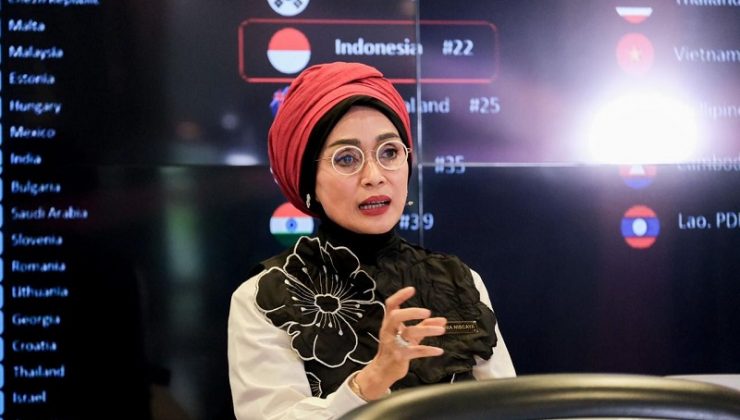INDONESIA’S significant rise in the Travel & Tourism Development Index (TTDI) ranking has become a catalyst for the country’s future growth, with the tourism and creative economy sectors poised for expansion.
According to the Tourism Ministry’s Senior Expert Staff, Nia Niscaya, in “The Weekly Brief with Sandi Uno” at the Sapta Pesona Building, Central Jakarta, Monday (7/01) 2024, said the ministry’s recent study on the impact of an increased TTDI ranking. The study yielded several recommendations that could serve as the foundation for developing Indonesia’s tourism and creative economy in the future.
“TTDI is one of the primary performance indicators for the Ministry of Tourism and Creative Economy, in addition to the number of foreign and domestic tourists, the value added and export value of the creative economy, the number of workers, and foreign exchange. This assessment allows for easy comparison with 119 other countries because it uses the same indicators,” said Nia.
Nia stated that, according to the TTDI assessment pillars and indicators, there are several areas in Indonesia that require improvement, namely health and hygiene, tourist service and infrastructure, ICT readiness, openness to T&T, and human resources and labor market and environmental sustainability.
“While not all of these areas fall under the direct purview of the Ministry of Tourism and Creative Economy, it is imperative that we collectively address these challenges. Therefore, it is essential to foster strong collaboration between relevant parties to ensure the continued assessment of the pillars and to prioritize the improvement of those that require it. The importance of coordination and collaboration between the ministries/institutions and Pentahelix,” she emphasized.
Meanwhile Dessy Ruhati, Deputy for Strategic Policy at the Ministry of Tourism, echoed this thing emphasizing that improving and managing the TTDI assessment pillars is a shared responsibility between ministries and institutions. The Ministry of Tourism and Creative Economy is responsible for only 30% of the assessment pillars.
“We can certainly take corrective steps together through a cross-sectoral collaboration strategy. It is important to note that 30% of the indicators are the duties and functions of the Tourism Ministry, while the other 70% are related to the duties of other ministries and sectors. This strategic step is an effort for us in “strengthening the indicators on TTDI,” Dessy remarked.
Likewise, Myra P. Gunawan, founder of the Bandung Institute of Technology (ITB) Tourism Center, revealed that Indonesia’s ranking in the TTDI could serve as a basis for developing and strengthening supporting infrastructure in the Indonesian tourism and creative sector. This ranking represents a significant opportunity for driving such development,” Myra noted.
At the same event, Professor M. Baiquni of Gajah Mada University (UGM) emphasized the importance of a balanced approach to the development of the tourism and creative economy sector across Indonesia. To achieve a more balanced distribution of tourist visits across the country, rather than concentrating them in a few select destinations.
“We are beginning to observe overtourism in several destinations in tourist-dense areas, including Bali, Yogyakarta, Bandung, Jakarta, and Surabaya. Sometimes extraordinary traffic jams occur, and this is a problem that we need to continue to look for solutions to manage,” concluded Baiquni. [traveltext.id]
















